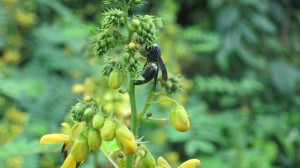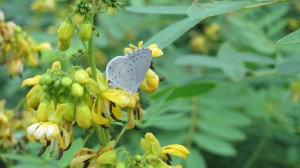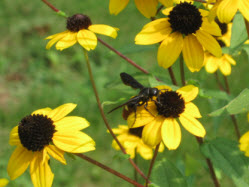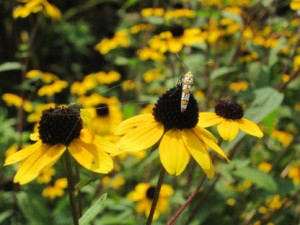“Native plants” means those types that historically, or currently, grow wild in the area you are gardening in.
And by wild, we mean they are there naturally – they aren’t garden escapes or invasive species like the Japanese honeysuckle (invasive in the US), Japanese knotweed (invasive EVERYWHERE), or garlic mustard (invasive in the US).
Not to mention the Giant Hogweed (sorry, Genesis fans)
Trust me, we don’t want to encourage these plants. They are quite cute where they are meant to grow – its just nothing can control them naturally when they get loose in other countries.
And these invasives can sneak up on you too….
So, what’s so special about native plants? Why use them at all if I can go and see them in the wild if I want?
Well, you often can’t, anymore, because some of our native plants are now extremely rare, or even extinct – due to their habitat being built on, or being degraded by pollution or by over-grazing by deer.
Secondly, native plants are magnets for wildlife. Plants that have evolved and adapted to your neck of the woods will be, paradoxically, resistant to any devastating insect attack while at the same time harboring many more insect species than non-natives. This is usually good; there is a balance, as the species has been doing this for thousands if not millions of years. Those insects, spiders and other minibeasts will be the basis of a whole ecosystem of feeders and being-fed-upons. The ultimate is an oak tree native to the region, which can support hundreds of different insect and fungi, and on the back of that, many different bird and mammal species through twelve months of the year.
Finally, ‘native plants’ doesn’t mean weeds. Weeds are plants growing in the wrong place. Trust me, you’re going to REALLY WANT to have THESE plants in the yard. They are beautiful, some are rare, and they will be plastered with bees and butterflies….and other insects key to your garden’s ecology.
Take, for example, two insects I photographed within five minutes of each other on a beautiful Wild Senna growing in my herbaceous border (Cassia hebecarpa):
And here are two lovely insects on Black-Eyed Susans:
… as well as a Mountain Mint (Pycnanthemum) attracting hosts of bees and wasps:
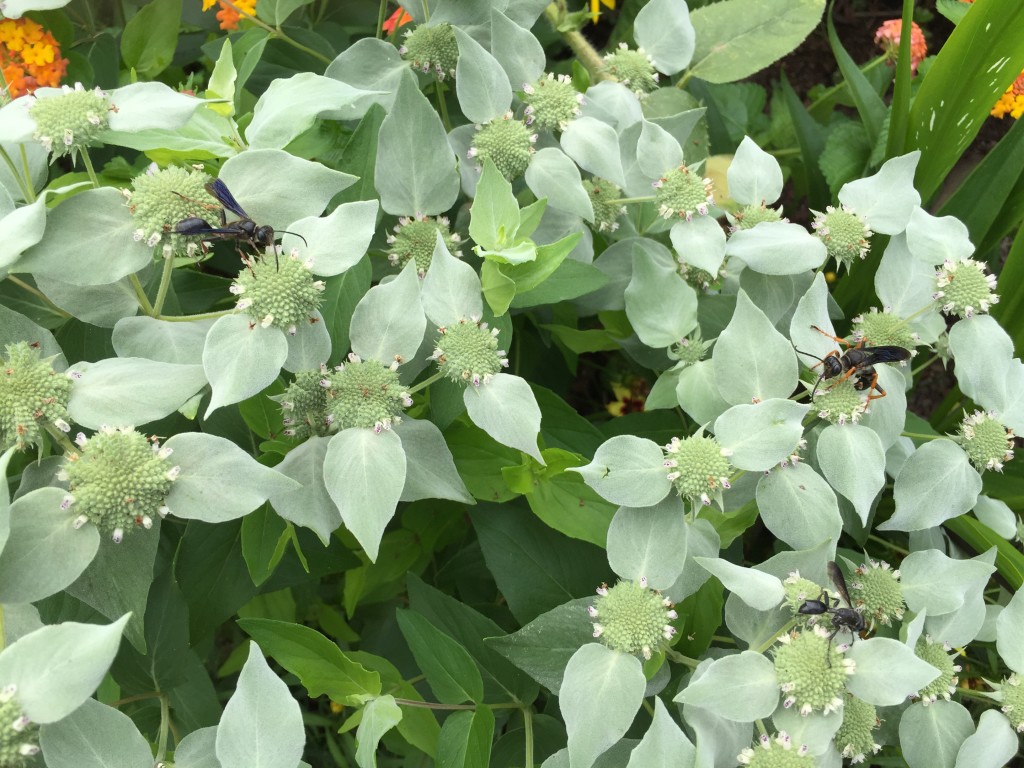
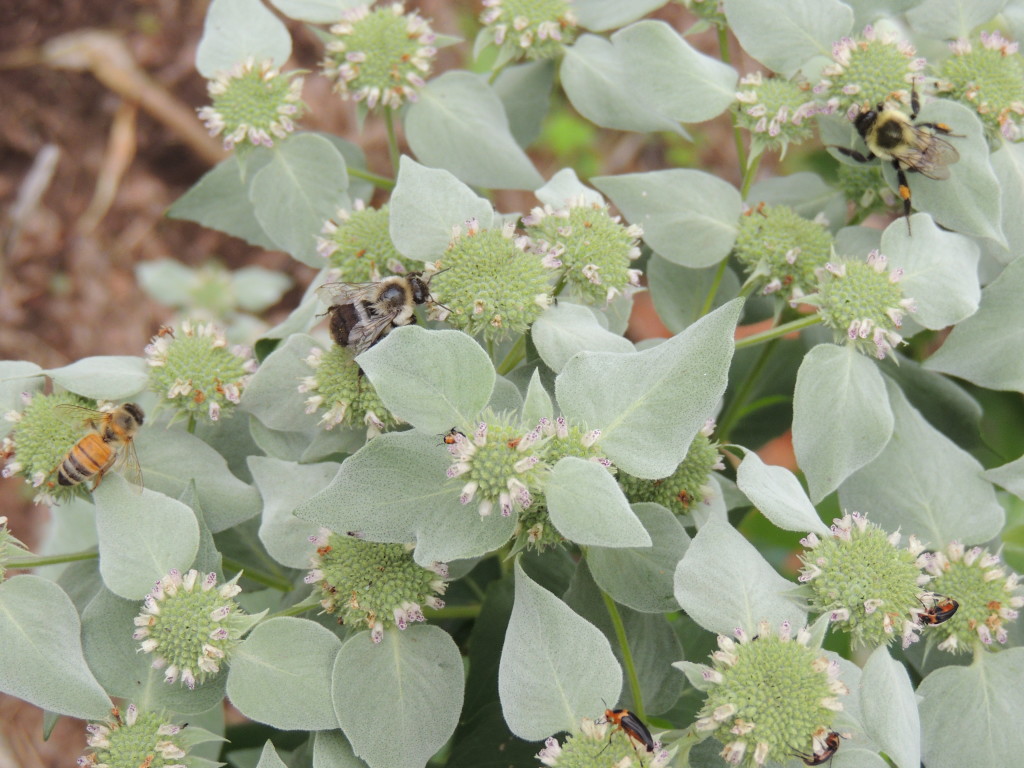
The Joe Pye Weed is an insect magnet (native to Southern Canada and the northern US):
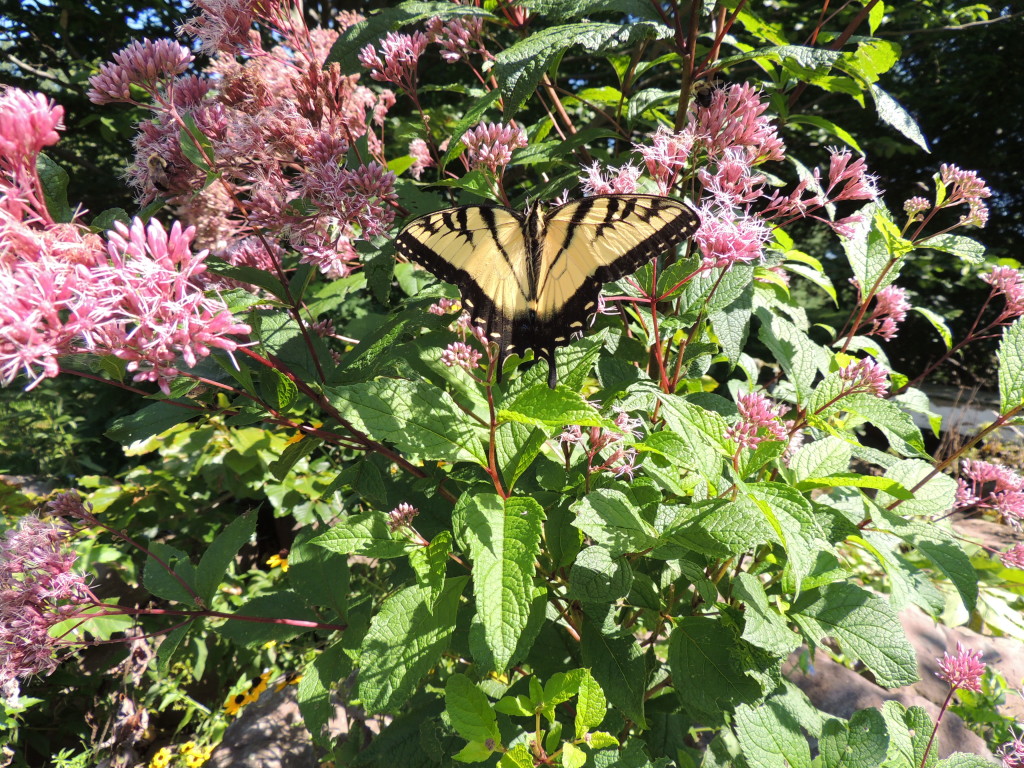
So, do some research. Find what is native to your county, state or region, and plant plenty of them. If there is a showier variety, that’s OK, as long as you avoid double flowers, which are often spurned by butterflies and bees.
What plants to grow?
- United States: a fabulously informative site is http://www.wildflower.org, where you can find which plants are native to your state, and then narrow down your choice by their color, when they bloom, how much light they need, and whether they need damp or dry places. This is the site for the Lady Bird Johnson Wildflower Center, and they do wonderful work protecting native plants and granting awards to those innovative cities and townships who are catching the “native plant bug”…and see, in addition, http://plants.usda.gov for a fantastically comprehensive site
- Canada:
-
- http://www.gardenguides.com/94791-native-plants-canada.html
- http://www.wildflower.org/
- Note: The North American Native Plant Society has a web site listing local native plant nurseries & state-level native plant societies: www.nanps.org.
- United Kingdom:
- http://www.wildaboutgardens.org/ – this is a wonderful collaboration of the Royal Horticultural Society and the UK Wildlife Trusts
- https://rootsandall.co.uk/which-native-plants-should-you-grow-in-your-garden/
Questions? Comments? E-mail me on johnnydogmatic@comcast.net
